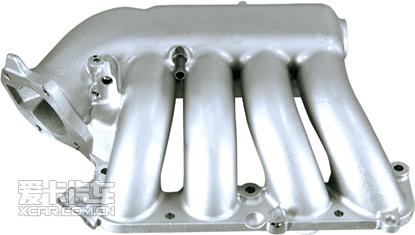Intake manifold vacuum degree and leakage
Release Date:2017-12-27 Times of Browsing:2531
When the piston is in the cylinder, when the engine is in the intake stroke, the piston moves down into the cylinder to produce a vacuum (that is, the pressure is smaller), so that the pressure is poor with the outside air, allowing the air to enter the cylinder.

The intake manifold is located between the throttle and the engine intake gate, which is called the "manifold", because after the air enters the throttle, the air passage is "divided" after the air inlet is passed through the manifold. The number of the engine cylinders, such as the four cylinder engine, is four, and the five cylinder engine has five channels, respectively. In the cylinder. As the intake manifold is in the throttle, the intake manifold is located after the throttle, so when the engine throttle is open for hours, the full air can not be absorbed in the cylinder. The vacuum degree of the manifold will be high, and the vacuum degree in the intake manifold will be smaller when the engine throttle is open. Therefore, the fuel injection engine will install a pressure gauge on the intake manifold, supply ECU to determine the engine load, and give the right amount of fuel injection.
Manifold vacuum can be used not only to provide pressure signals to determine engine load, but also many other functions. For example, the brake needs to be assisted by the vacuum of the engine, so when the engine starts, the brake pedal will be much lighter because of the vacuum assist. Some types of fixed speed control mechanisms also use manifold vacuum. Once the vacuum tube is leaked or unproperly modified, it will cause the engine control maladjustment, and will also affect the braking of the brake, so try not to make improper refitting on the vacuum tube, in order to maintain the safety of the driving.
In terms of design, the length and curvature of each cylinder should be the same as possible for the same combustion condition of each cylinder. As the engine completes the running program by four trips, each cylinder is pumped in pulse mode. According to experience, the longer manifold is suitable for low speed operation, and the shorter manifold is suitable for high speed operation. So some models use variable length intake manifolds or continuously variable length intake manifolds, enabling engines to perform better in all speed domains.





